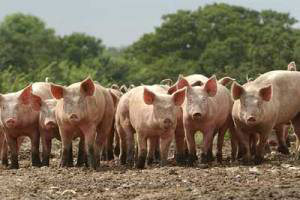High levels of phosphorus good for bone quality in pigs

Wageningen UR Livestock Research determined the influence of phosphorus (P) content in the feed on growth performance, feed utilisation, phosphorus retention and bone quality in pigs.
In this study male and female pigs were supplied with increasing dietary P levels from 50 to 130% of the present recommendations and determined growth performance, feed conversion and P retention in the body between 25 and 125 kg body weight.
In general this study indicates that present recommendations are adequate to maximise animal performance. A P content in the diet below requirements resulted in a lower daily gain and a less efficient feed utilisation. However, the P-retention in the body and the metacarpus bone ash content increased linearly to the highest diet P content of 130% of recommendations.
For future application, the researchers address that it is needed to define what level of bone ash is desirable in order to estimate what dietary P content is required. At low P levels the pigs give priority to muscle and lean tissue deposition above skeleton development. Consequently, growth performance is maximised at lower dietary P-levels at the expense of P-retention in the skeleton, bone ash content and bone strength.
In the study, boars realised a higher gain and more efficient feed utilisation than sows and had less lipid and more protein in their bodies. Boars did not show a higher whole body P content. Rather, at low dietary P level, body P-content was higher in sows. Hence, these results indicate that efficiency of P utilisation in pig farms can be based on the same standard whole body P-content for boars and sows.
[Source: Wageningen UR Livestock Research]











